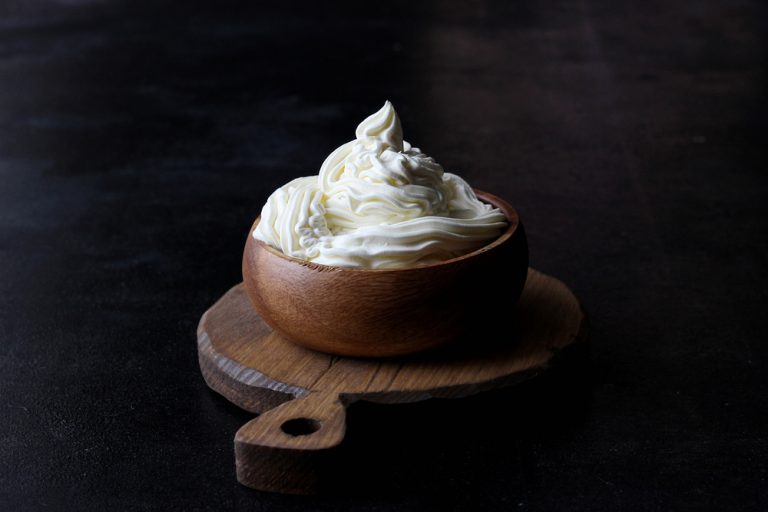Mascarpone is an Italian curd cheese that is widely used in the various dishes around the world. Mascarpone is characterized by a creamy, sweet taste, which is why it is the base of cakes and desserts, although it will also work well as an addition to dry dishes. Check what are the other uses of mascarpone cheese and how many calories it has.
What is Mascarpone
Mascarpone is a type of soft cheese with high-fat content, a delicately creamy, slightly buttery flavour and a creamy texture. Mascarpone is obtained from cream obtained in the process of centrifuging fresh cow’s milk. The cream obtained in this way is placed in stainless steel tanks and heated to a temperature of 85-90 Celsius degrees with constant stirring.
Then, coagulating substances (citric acid or lemon juice) are added to the cream, which task is to acidify the environment and lead to the formation of small clots, which, as the process progresses, form a thick coagulum.
The final stage of production is draining the whey from the coagulum utilizing filtration or mechanical separation and the production of cheese. No rennet or starter culture is used to make the cheese.
Mascarpone - health properties
Mascarpone is a high-calorie product, rich in fats (it can contain even 80% of fat), mainly in saturated fatty acids, which when consumed in large amounts contribute to an increased risk of obesity, heart disease and type 2 diabetes. Additionally, mascarpone contains large amounts of cholesterol.
Mascarpone is a source of calcium, but the content of this mineral is lower than in hard cheeses.
Calcium is involved in bone development, it is necessary to maintain the durability and the proper structure of bones and teeth. Also, it participates in the processes of muscle contractility, conduction of nerve stimuli regulates blood clotting and ensures the correct functioning of the heart muscle.
Mascarpone cheese is also a source of vitamin A, responsible for proper vision and proper skin condition.
Mascarpone, due to the high content of saturated fatty acids, is not a product that we should eat every day. Let us choose it from time to time and in small amounts.
Mascarpone - use in the kitchen
Due to its organoleptic properties, Mascarpone is widely used in the kitchen. It is most often used as an addition to cakes and desserts.
It is the main ingredient of the famous Italian dessert, tiramisu. It is also perfect as an addition to tarts, cheesecakes and as a stuffing for pancakes. Mascarpone can also be added to whipped cream, which will improve its durability, as well as prepare ice cream based on it. Mascarpone can be served with fresh fruits and granola.
In addition, mascarpone cheese can be used in dry dishes, e.g. added to pasta sauce or baked dishes, thickener in soups or risotto, enriching dips. Mascarpone can also be used as a sandwich spread instead of butter or margarine.
It is worth knowing that mascarpone gets spoiled very quickly, so you should eat it immediately after opening.






